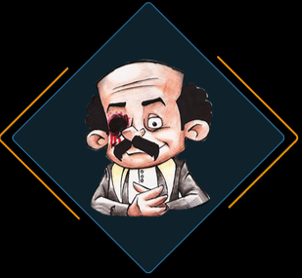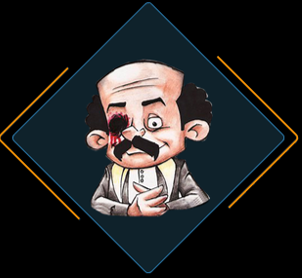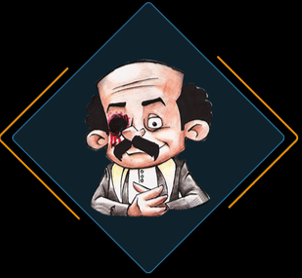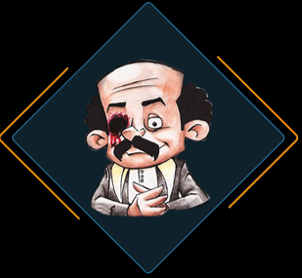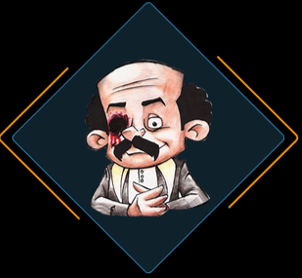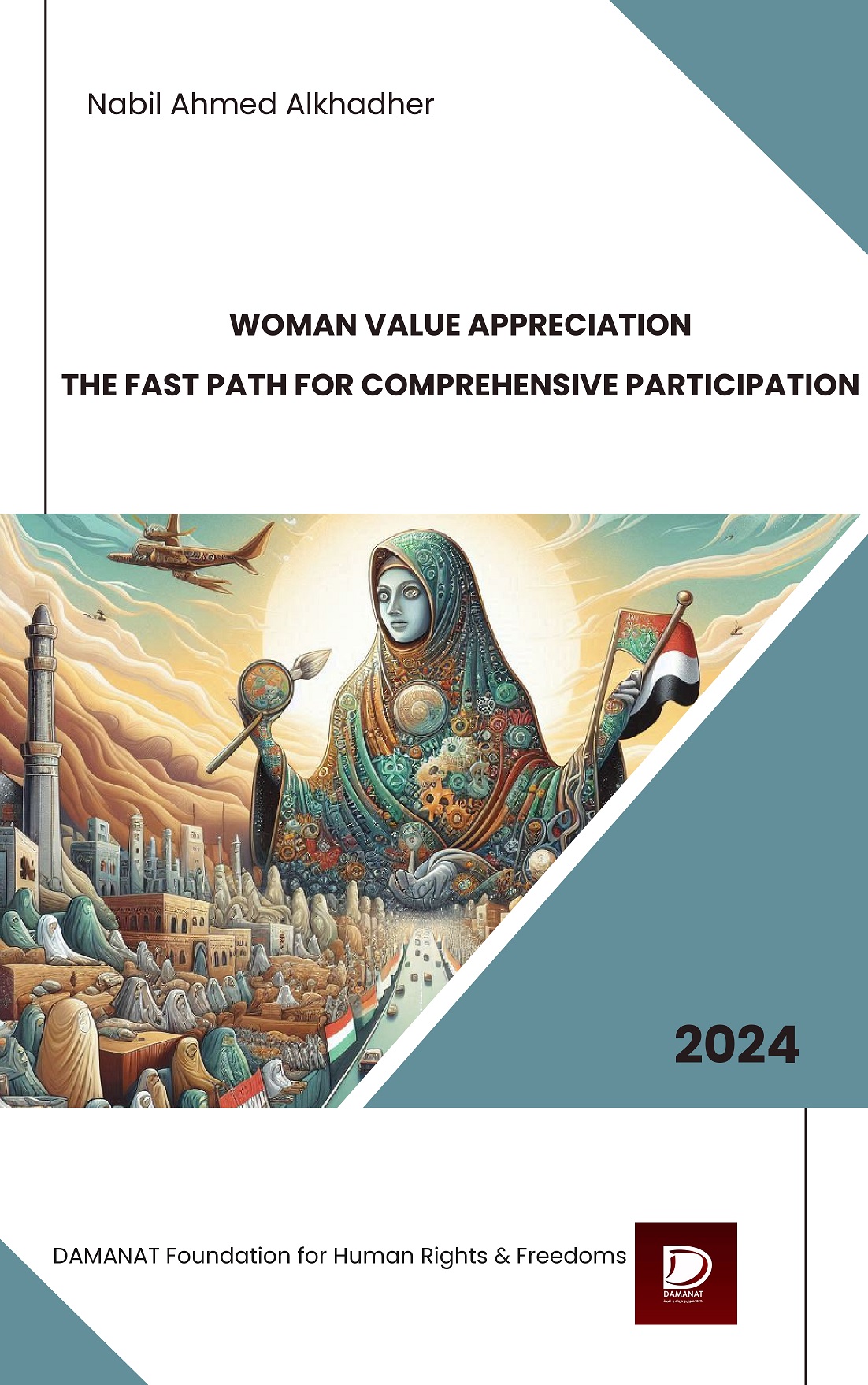Sun,Dec 14 ,2025
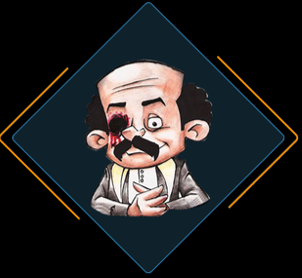
Child Protection Practices from Internet Violence
2025-04-25
4 questions that can be asked when talking about children and the Internet:
- How can I achieve the child's right to benefit from the Internet?
- How can I protect a child from online violence?
- What are the personal practices and electronic tools that help protect children on the Internet?
- What Internet sites can help me in child protection?
How can I achieve the child's right to benefit from the Internet?
In the beginning, every person must believe in the right of the child to obtain information as a basic right guaranteed to him by the Convention on the Child’s Rights, to contribute to the success of the child in obtaining information easily, and to help him search for, obtain, use, and benefit from it, not neglecting addressing any challenge, obstacles or culture that prevents the child from obtaining the information he needs for his mental, psychological and scientific development.
Since the Internet has become the global storehouse of information, it is important to protect the child's right to access the Internet as part of his right to obtain information or one of its applications.
At the technical level, the other aspect is related to building the child's capabilities in dealing with the Internet and the digital environment. On the ethical level, at the first level, it is possible to teach the child useful Internet search methods, the skills of benefiting from the information spread in it on his educational activities, and ways to entertain himself on the Internet in a safe and appropriate manner for his age.
At the second level, it is possible to warn the child of some bad content on the Internet and to set common standards with the child regarding not accessing this content. In addition to establishing agreements with the child to be frank and honest about anything that happens to him in the digital world, especially by strangers, their seducing, and setting standards that keep the child away from electronic bullying, whether he is the perpetrator or he is the one being bullied and protected from it.
The third aspect in achieving the child's right to benefit from the Internet is related to education and children's right to education. Needless to say, to mention how the Internet is rich in educational and interactive websites that makes the child interested and interactive with the educational process.
The Internet helps the child search for information that he may need in education, especially if it is conducted by him looking for information that enriches his educational participation in school.
In this aspect, it is important for the person in charge of child care to work on building the child's capabilities in using the Internet, ways of searching in the network, and how to benefit from information, expertise and experiences on the Internet for the benefit of his education.
The fourth aspect is the realization of the child's right to express his opinion, his right of participation. The Internet is a good medium for disseminating the child's creativity if he has a talent for writing, drawing, or any other talent, which helps him to raise the level of his talent and benefit from the feedback that he may reach through the recipient about his creations, this also achieves his right to participate as well.
In this aspect, it is important for the person in charge of child care to work on choosing the appropriate sites for the child in order to publish, interact and participate in their issues through the sites devoted for children or the sites of some institutions that provide services for children to participate and publish in a safe and stimulating environment.
It is also important to protect the child from bullying because of his ideas or creativity. Work to protect the child from bullying and that his participation via the Internet should not have a negative role on his health, psyche, and desire to participate and learn.
The Internet is a new open, decentralized and interactive means of communication, therefore anyone can publish whatever s/he wants, however a child is supposed to publish and participate within the standards that promote his/her rights and protect him from violence directed against him/her, if necessary.
The fifth aspect in achieving children's rights on the Internet is related to the child's right to assembly and organization, this is what allows him/her to join groups of children who have the same interests, play games on children's websites and benefit from their common experiences for the benefit of each other, pay much care on protecting the child also from exposure to electronic bullying or having a negative impact on joining these groups.
The sixth aspect relates to the right to entertainment, which is one of the basic rights of children, whether in reality or on the Internet. The child can obtain entertainment on the internet through videos spread on children’s sites or from those websites that allocate pages for children to entertain from their content or engage in electronic games.
However, it is important for the child’s care giver to work on monitoring the content the child watches on the sites and determine its suitability for the child and his age. Determine the hours of playing on the internet so as to achieve a balance between the child’s benefit from the Internet and protecting him from its dangers.
How can I protect a child from online violence?
It is important to protect children from the dangers of the Internet, but it is also important to use protection strategies for them in a rational and non-strict manner and to work well on prevention and control techniques without harming the child's right of enjoyment and benefit. Balance in activating the rights of the child to benefit from the internet and protecting him/her from internet’s dangers is the best behavior for care and protection providers, whether parents or teachers and others who have direct contact and relationship with children.
The beginning of child protection begins with protecting the privacy of the child, which is one of the most important issues that must be taken into account.
The child caregiver and protection provider can work on the availability of 5 main criteria in any website that the child accesses, including:
Find out if the site requests personal data of the child and the extent of its harm to him.
Find out if the site uses the child's data for other purposes, what are they?
Know the extent to which the child has accessed his data on the site and his ability to modify it.
What security standards does the site provide for children's users to ensure the confidentiality of the child's data and use
Know the privacy charters of the sites used by the child, checking their materials, not dealing with them in the event that these charters do not guarantee the protection of children on the site.
Know that the child is aware of the limits of his/her use of the internet and his/her commitment to the standards that guarantee his/her safety when browsing and the balance between the child's right to obtain information and the child's right of privacy.
With regard to the child's awareness of the limits of his/her use of the Internet, the caregiver can develop protection policies for him/her in partnership with him, as the child is the first line of defense in the matter of his protection when using the internet by adhering to the standards that s/he adheres to when browsing, realizing that these standards were set to protect him/her, thus s/he must adhere to them and resort to them in case s/he is exposed to any behavior that harms her/him, her/his well-being, his/her education and her/his use of the Internet.
The second point in the matter of child protection is related to regulation of her/his use of the internet according to specific times that do not harm his life in general with his family, friends and social relations, as well as do not harm his education and other cultural and recreational practices. Ensure the application of these timetables so that the internet does not become harmful to the child at all psychosocial levels.
The developers of the Internet have worked on creating technical tools to protect internet users, whether adults or children, to protect their data and privacy.
There are many applications that specialize in protecting children who use the internet, the child caregiver must work on using and investing these applications in favor of child protection when using the internet and make his activity on the network fun, useful and safe.
There are cases of jumping on these practices by some people that allow children to access the internet with no supervision. If the caregiver finds himself and the child in a similar situation, s/he can resort to the law to protect his/her child from harm made by those people.
As long as we talk about legal procedures, it is important to talk about the role of governments in protecting children from the dangers of the internet by developing technologies that prevent children from accessing sites that do not suit them.
Develop policies to protect children from the dangers of using the Internet, promote these policies, build the capacities of child caregivers on them, and put in place laws to protect children's privacy when using the Internet. Develop mechanisms to ensure this, governments should work on developing integrated programs that include technical, legal, organizational, community and educational solutions to protect children on the Internet.
What are the personal practices and electronic tools that help protect children using the Internet?
In the answers to the previous question, we talked about some practices that help protect children who use the Internet, including employing protection strategies, activating prevention and control techniques without harming the child’s right of enjoyment and benefit, protecting the child’s use of the internet, making the child aware of the limits of his/her use of the Internet, regulating his use of it and the use of technologies that help protect children online.
It is important to refer to the practices that contribute to a greater guarantee of protecting children on the internet, such as identifying children's needs from the network, providing them with permanent monitoring and developing techniques and methods to protect their privacy on the Internet.
Building children's abilities to properly use the digital environment, using protection tools and means intelligently. Building children's awareness of the culture of using the Internet, the way they manage their data on the network, know/learn the risks that may surround children, their awareness and application of appropriate behaviors to do with sources of danger on the Internet.
In the next Some of the practices that help protect children from the dangers of the Internet we mention:
- Education on the positive use of the Internet
- Balance in the use of the Internet
- Building the child's abilities on internet ethics
- Increasing the sensitivity of the child, his caution, and limiting him/her from bad people on the Internet.
- Introducing the child to the rules of online exchange
- The child's openness to adults about what is happening to him on the Internet.
- Continuous monitoring of adults on the child's use of the Internet.
- Adult activity in preventing children from internet violence, seduction or exploitation
- Familiarize the child with the laws of using the internet.
- Developing electronic programs that prohibit children from accessing unwanted sites.
What sites can help me in child protection when using the Internet?
There are many sites that provide children and caregivers with advice about children's safety on the Internet, led by Google.
In the following lines, some questions and their answers taken from Google about children's safety on the Internet.
Some advices from Google:
- Let your teens create playlists of their favorite videos, have fun-creating your own, and then sit to watch it with them. You can see what your kids are watching, while they watch some of your choices as well.
- Show your children what you used to watch as a child by putting together a playlist of clips from your favorite shows.
- You can make watching YouTube fun: think of the types of videos that are popular in a particular place, then use the advanced search to watch only the videos. This is an engaging way to have a conversation with your children about cultural assumptions, tastes, and the similarities and differences between cultures.
- Encourage teens to talk to a trusted adult if there is something on the site that worries them. Maintaining constant communication with your children is very important to ensure online safety.
Some tips from YouTube:
How old should my son be to be able to use YouTube?
In order for users to create a YouTube account, we require that users confirm that they are at least 13 years old. Users who enter a number less than 13 are blocked from creating YouTube accounts. In addition, if a video is reported by a user, and upon review we discover that the user entered the age number incorrectly when creating the account, the account will be suspended.
What shall I do if I come across inappropriate content on YouTube?
If you see a video or comment that violates our Community Guidelines, report the video. This is the quickest way to notify us of potentially inappropriate content.
YouTube policy specialists review flagged videos on a daily basis throughout the week. If a video contains an invasion of privacy or is harassing and includes a student or teacher, please ask that person or their legal guardian to contact us by visiting the Safety Center.
How do I file a privacy or nuisance claim on behalf of my son?
The first step is to go to the security center and review the security information related to your issue. Then go to the Help & Security tool to report a privacy violation or user harassment. The Help & Safety tool also allows you to delete annoying comments about videos you or your teen own, as well as block other users.
My son is being bullied by his YouTube account. So what should I do?
The first step is to block the user. This will help prevent the unwanted user from sending further messages. If the harassment continues, please see the relevant page within the Safety Center for information on preventing and reporting harassment through the Safety and Help tool.
How do I remove profile information from my son's profile?
Start talking to your son. Engaging people to talk to him about what he posts can help him distinguish between appropriate and inappropriate content to post online. Each account has profile editing controls in the "Account" link at the top right. For more information about talking to teens about privacy online, see the Common Sense Media online resource.
How can I control the comments and content my children see?
The safety mode feature is an option. YouTube's safety mode is a setting that you can enable or disable that helps block potentially objectionable content that you might prefer not to see or want other people in your household to accidentally see while enjoying YouTube. When the safety mode feature is enabled, videos with potentially objectionable or age-restricted content will not appear in the video search.
Safe Mode does not remove content from the site but keeps it off the page for users who enable this feature. Because no filter is 100% accurate, we're constantly updating and improving our filters to identify inappropriate videos with our safety mode feature. You can enable the safety mode feature by clicking the link at the bottom of any video page.
Can my son's channel be removed from YouTube?
Talk to your teen directly about editing or removing videos, comments, or profile information that you feel are inappropriate. This is the easiest and quickest way to deal with inappropriate content posted by your child. By talking to your son, you also have the opportunity to learn more about his interactions on YouTube.
Summary
These tips and answers to questions are related to one site on the Internet, which is YouTube. There are hundreds of other sites that have pages for children and have more tips to protect children when browsing. There are also sites specialized only in developing studies and research and answering questions from surfers on the Internet about child protection in the digital world, these sites are affiliated with local and international organizations and global initiatives that focus on developing methods and techniques for protecting children on the Internet.
